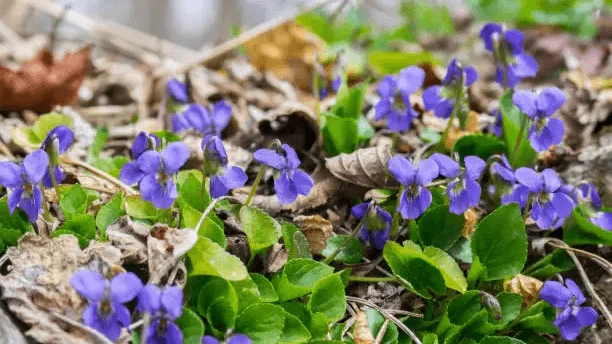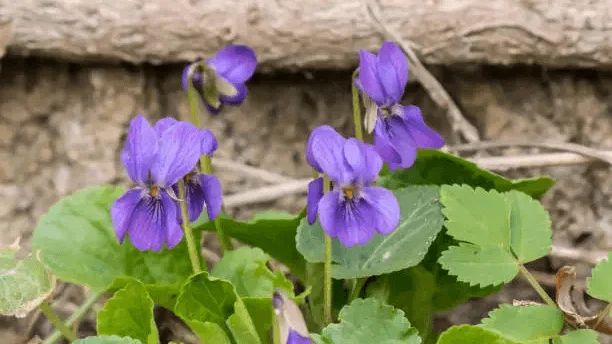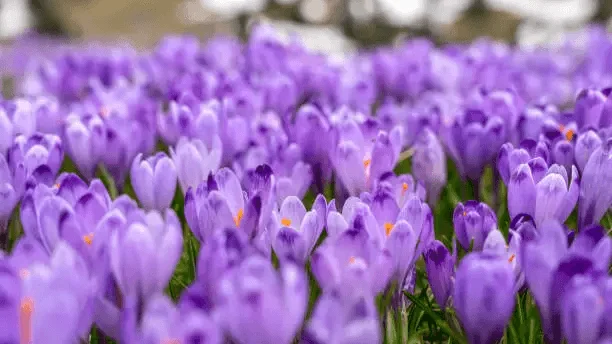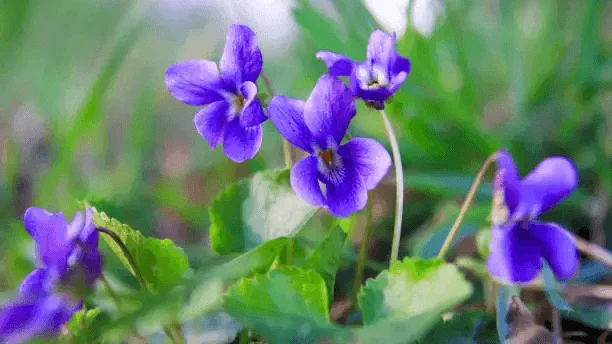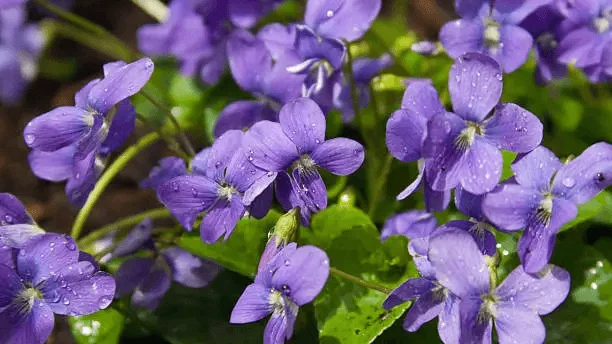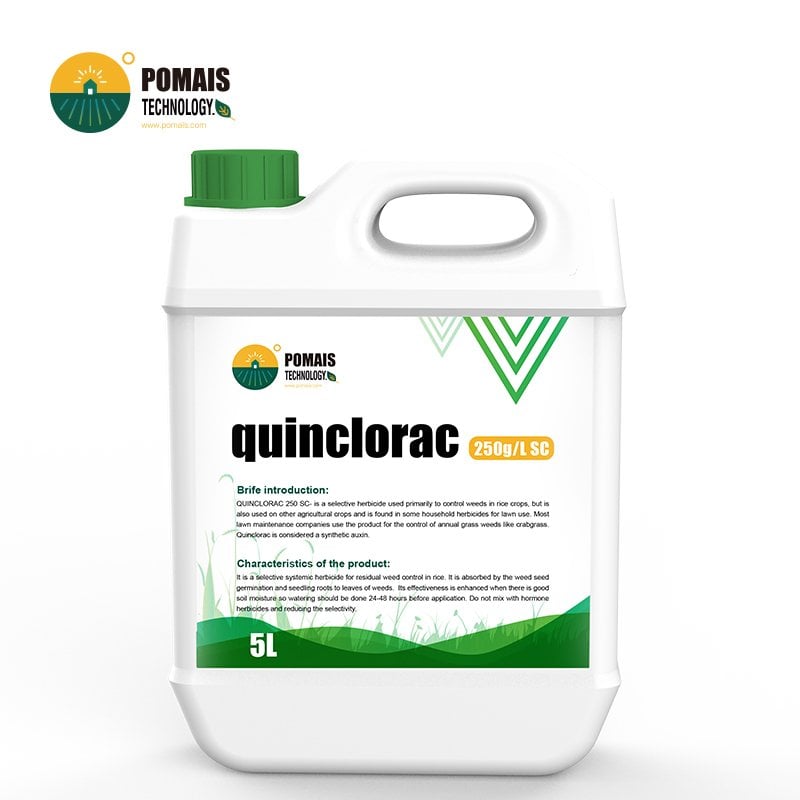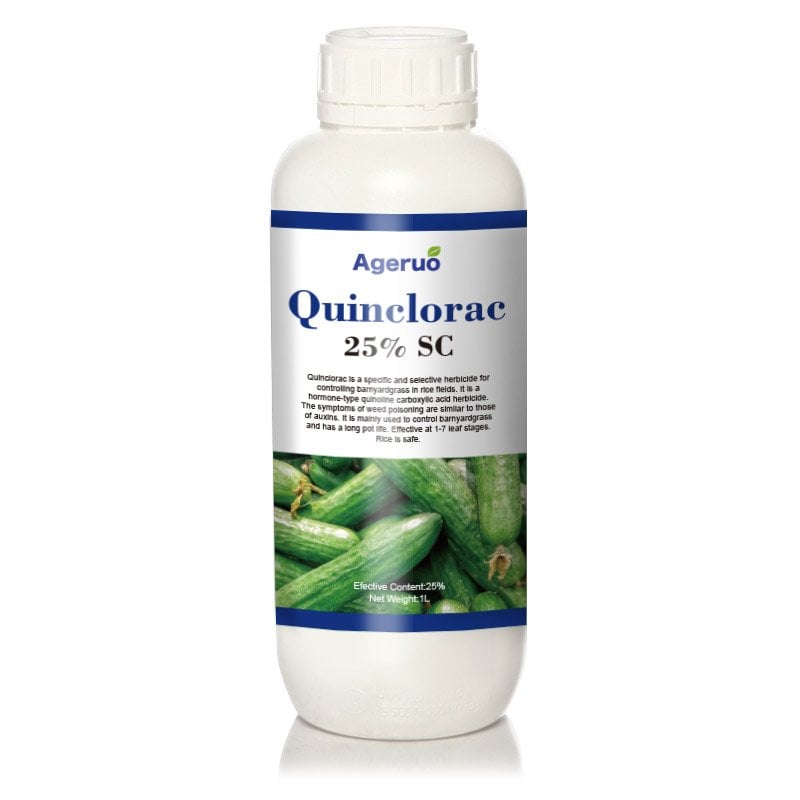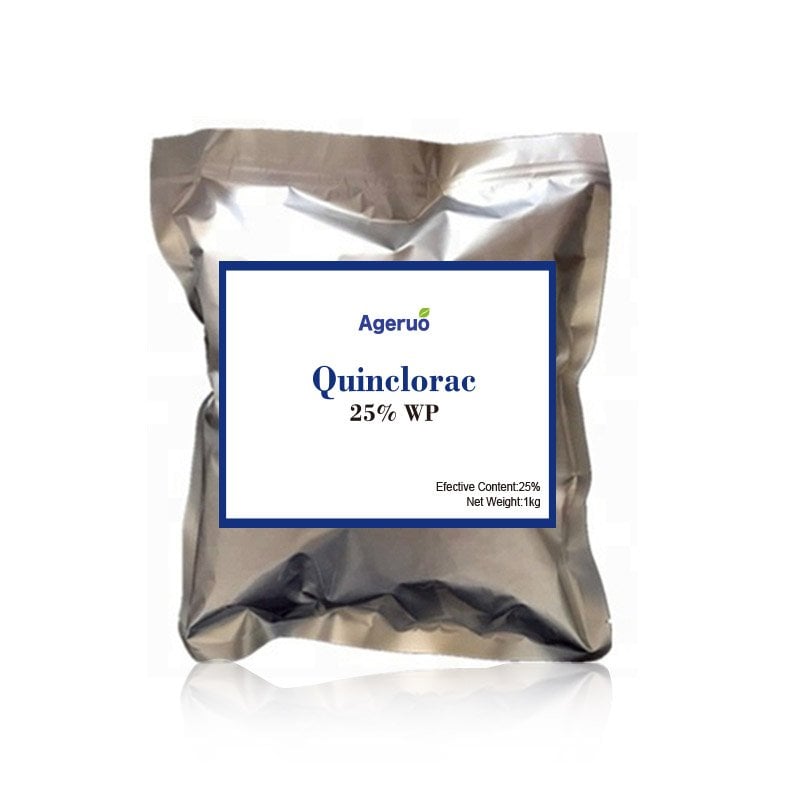Lawn and Turfgrass Weeds Control: Quinclorac vs. Wild Violet
Wild violets (Viola spp.) are among the most challenging weeds for lawn care enthusiasts and landscapers due to their resilience and ability to spread rapidly. Known for their attractive, heart-shaped leaves and purple-blue flowers, these plants may seem harmless but can quickly take over a lawn, competing with grass for nutrients, water, and sunlight. This article explores the effectiveness of quinclorac in controlling wild violet, as well as other strategies, herbicides, and tips for managing this and similar persistent weeds.

Wild Violet Control
Wild violets are perennials with deep root systems and waxy leaf surfaces, which makes them tough to control. Here’s why they are particularly hard to eliminate:
- Waxy Leaf Surface: This surface repels many liquid herbicides, reducing the herbicide’s effectiveness.
- Deep Taproots: Wild violets develop extensive taproots that allow them to regenerate even if the visible foliage is removed.
- Rapid Spread: These plants propagate through both rhizomes and seeds, leading to quick and dense infestations in lawns.
For these reasons, traditional lawn care and shallow herbicide applications often prove ineffective against wild violets, necessitating a more strategic approach.
Quinclorac: A Powerful Solution for Wild Violet Control
Quinclorac is a post-emergent herbicide commonly used for broadleaf weed control in turfgrass. Known for its selective action, quinclorac targets tough weeds like wild violet without harming most grass species.
How Quinclorac Works on Wild Violet
- Systemic Action: Quinclorac is absorbed through the leaves and moves throughout the plant, reaching the taproot and disrupting the weed’s internal structure. This systemic action ensures that the herbicide affects the entire plant, preventing regrowth from roots.
- Hormonal Disruption: Quinclorac disrupts the plant’s auxin pathways, which are essential for normal growth. This disruption causes abnormal growth and ultimately kills the weed.
- Extended Residual Effect: Once applied, quinclorac remains active in the soil for a certain period, helping to control any newly germinating seeds.
Application Tips for Quinclorac
- Use a Spreader-Sticker: Due to the waxy surface of wild violet leaves, adding a spreader-sticker to the quinclorac mixture can enhance the herbicide’s adherence to the leaves, improving absorption and overall effectiveness.
- Timing: The best time to apply quinclorac is in the fall, when wild violets are actively transporting nutrients to their roots in preparation for dormancy. Fall applications help the herbicide reach the root system more effectively.
- Multiple Applications: Wild violets are resilient, so a single application may not be sufficient. Multiple treatments over time can ensure complete control.
Other Herbicides for Wild Violet Control
While quinclorac is effective, other herbicides are also useful in controlling wild violets and similar broadleaf weeds.
- 2,4-D and Dicamba: These are selective broadleaf herbicides that target plants like wild violet while sparing grasses. They are often available in combination products for broader control.
- Triclopyr: Known for its effectiveness on woody plants and difficult broadleaf weeds, triclopyr is a good alternative for controlling wild violet, especially when quinclorac alone doesn’t provide complete control.
- Combination Products: Some commercial products combine quinclorac with 2,4-D or Dicamba, offering a multi-action approach to maximize effectiveness on wild violets and other stubborn weeds.
Application Timing and Lawn Management
Fall is the most effective season for wild violet control, as the plants are preparing for winter dormancy. Herbicides applied during this time can travel down to the roots, providing longer-lasting control. Here’s a seasonal breakdown for managing wild violet and similar weeds:
- Fall: Apply herbicides like quinclorac or triclopyr for best results.
- Spring and Summer: Spring applications may only affect the foliage without reaching the roots, while summer applications may cause temporary dieback without full control.
- Mowing and Lawn Care: Maintaining a healthy, dense lawn helps prevent wild violet infestations. Mow regularly and keep the grass healthy to reduce space for weeds.
Managing Other Tough Weeds with Quinclorac
Quinclorac’s broad-spectrum action makes it effective on several other difficult weeds:
- Crabgrass: Quinclorac is well-known for its effectiveness against crabgrass, a common grassy weed that invades lawns in late spring and summer.
- Ground Ivy: Like wild violet, ground ivy (also known as creeping charlie) spreads quickly and has a waxy surface. Quinclorac can suppress ground ivy with multiple applications.
- Dandelions and Clover: Quinclorac can be part of a comprehensive weed management strategy to target these persistent broadleaf weeds as well.
Integrated Weed Management Tips
To maximize the effectiveness of quinclorac and other herbicides in controlling wild violet and similar weeds, follow these integrated practices:
- Healthy Lawn Practices: A dense, healthy lawn naturally resists weeds by reducing open spaces. Regular fertilization, proper mowing height, and adequate watering all contribute to lawn health.
- Rotate Herbicides: Using different herbicides with various modes of action can reduce the risk of resistance in wild violet and other weeds.
- Spot Treatments: For small wild violet patches, targeted spot treatments with a hand sprayer can prevent herbicide overuse and reduce potential turf damage.
Conclusion: Effective Wild Violet Control with Quinclorac
Quinclorac offers an effective solution for controlling wild violets, one of the most challenging weeds for homeowners and landscapers alike. By leveraging its systemic action, hormonal disruption, and compatibility with other herbicides, quinclorac can help control wild violets without harming grass. However, success requires a strategic approach, including fall applications, use of a spreader-sticker, and possible repeat treatments. By following these steps and maintaining a healthy lawn, you can effectively manage wild violets and enjoy a vibrant, weed-free lawn.
Wild violets (Viola spp.) are among the most challenging weeds for lawn care enthusiasts and landscapers due to their resilience and ability to spread rapidly. Known for their attractive, heart-shaped leaves and purple-blue flowers, these plants may seem harmless but can quickly take over a lawn, competing with grass for nutrients, water, and sunlight. This article explores the effectiveness of quinclorac in controlling wild violet, as well as other strategies, herbicides, and tips for managing this and similar persistent weeds.

Wild Violet Control
Wild violets are perennials with deep root systems and waxy leaf surfaces, which makes them tough to control. Here’s why they are particularly hard to eliminate:
- Waxy Leaf Surface: This surface repels many liquid herbicides, reducing the herbicide’s effectiveness.
- Deep Taproots: Wild violets develop extensive taproots that allow them to regenerate even if the visible foliage is removed.
- Rapid Spread: These plants propagate through both rhizomes and seeds, leading to quick and dense infestations in lawns.
For these reasons, traditional lawn care and shallow herbicide applications often prove ineffective against wild violets, necessitating a more strategic approach.
Quinclorac: A Powerful Solution for Wild Violet Control
Quinclorac is a post-emergent herbicide commonly used for broadleaf weed control in turfgrass. Known for its selective action, quinclorac targets tough weeds like wild violet without harming most grass species.
How Quinclorac Works on Wild Violet
- Systemic Action: Quinclorac is absorbed through the leaves and moves throughout the plant, reaching the taproot and disrupting the weed’s internal structure. This systemic action ensures that the herbicide affects the entire plant, preventing regrowth from roots.
- Hormonal Disruption: Quinclorac disrupts the plant’s auxin pathways, which are essential for normal growth. This disruption causes abnormal growth and ultimately kills the weed.
- Extended Residual Effect: Once applied, quinclorac remains active in the soil for a certain period, helping to control any newly germinating seeds.
Application Tips for Quinclorac
- Use a Spreader-Sticker: Due to the waxy surface of wild violet leaves, adding a spreader-sticker to the quinclorac mixture can enhance the herbicide’s adherence to the leaves, improving absorption and overall effectiveness.
- Timing: The best time to apply quinclorac is in the fall, when wild violets are actively transporting nutrients to their roots in preparation for dormancy. Fall applications help the herbicide reach the root system more effectively.
- Multiple Applications: Wild violets are resilient, so a single application may not be sufficient. Multiple treatments over time can ensure complete control.
Other Herbicides for Wild Violet Control
While quinclorac is effective, other herbicides are also useful in controlling wild violets and similar broadleaf weeds.
- 2,4-D and Dicamba: These are selective broadleaf herbicides that target plants like wild violet while sparing grasses. They are often available in combination products for broader control.
- Triclopyr: Known for its effectiveness on woody plants and difficult broadleaf weeds, triclopyr is a good alternative for controlling wild violet, especially when quinclorac alone doesn’t provide complete control.
- Combination Products: Some commercial products combine quinclorac with 2,4-D or Dicamba, offering a multi-action approach to maximize effectiveness on wild violets and other stubborn weeds.
Application Timing and Lawn Management
Fall is the most effective season for wild violet control, as the plants are preparing for winter dormancy. Herbicides applied during this time can travel down to the roots, providing longer-lasting control. Here’s a seasonal breakdown for managing wild violet and similar weeds:
- Fall: Apply herbicides like quinclorac or triclopyr for best results.
- Spring and Summer: Spring applications may only affect the foliage without reaching the roots, while summer applications may cause temporary dieback without full control.
- Mowing and Lawn Care: Maintaining a healthy, dense lawn helps prevent wild violet infestations. Mow regularly and keep the grass healthy to reduce space for weeds.
Managing Other Tough Weeds with Quinclorac
Quinclorac’s broad-spectrum action makes it effective on several other difficult weeds:
- Crabgrass: Quinclorac is well-known for its effectiveness against crabgrass, a common grassy weed that invades lawns in late spring and summer.
- Ground Ivy: Like wild violet, ground ivy (also known as creeping charlie) spreads quickly and has a waxy surface. Quinclorac can suppress ground ivy with multiple applications.
- Dandelions and Clover: Quinclorac can be part of a comprehensive weed management strategy to target these persistent broadleaf weeds as well.
Integrated Weed Management Tips
To maximize the effectiveness of quinclorac and other herbicides in controlling wild violet and similar weeds, follow these integrated practices:
- Healthy Lawn Practices: A dense, healthy lawn naturally resists weeds by reducing open spaces. Regular fertilization, proper mowing height, and adequate watering all contribute to lawn health.
- Rotate Herbicides: Using different herbicides with various modes of action can reduce the risk of resistance in wild violet and other weeds.
- Spot Treatments: For small wild violet patches, targeted spot treatments with a hand sprayer can prevent herbicide overuse and reduce potential turf damage.
Conclusion: Effective Wild Violet Control with Quinclorac
Quinclorac offers an effective solution for controlling wild violets, one of the most challenging weeds for homeowners and landscapers alike. By leveraging its systemic action, hormonal disruption, and compatibility with other herbicides, quinclorac can help control wild violets without harming grass. However, success requires a strategic approach, including fall applications, use of a spreader-sticker, and possible repeat treatments. By following these steps and maintaining a healthy lawn, you can effectively manage wild violets and enjoy a vibrant, weed-free lawn.

